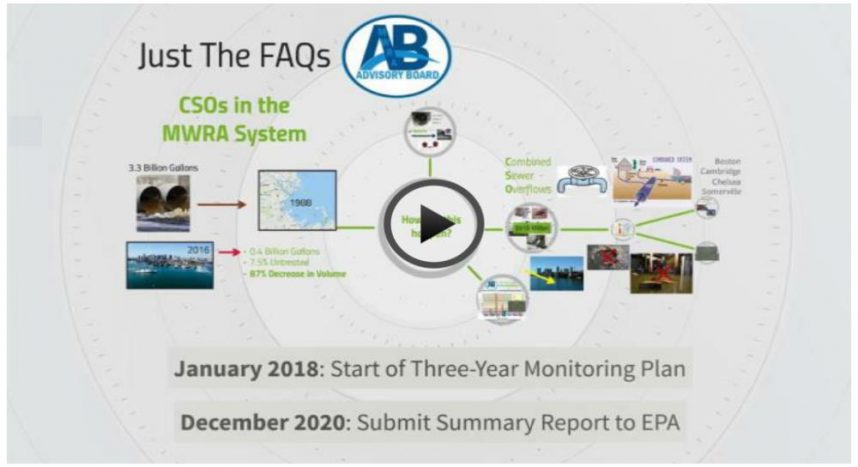[et_pb_section admin_label=”section”][et_pb_row admin_label=”row”][et_pb_column type=”1_3″][et_pb_text admin_label=”Text” background_layout=”light” text_orientation=”left” text_font_size=”14″ use_border_color=”off” border_color=”#ffffff” border_style=”solid”]
Once known for their “dirty water,” Boston’s beaches transformed from some of the foulest in the country to some of the cleanest, in large part due to drastic improvements to Deer Island wastewater treatment plant and the rehabilitation of combined sewer overflows (CSOs). In fact, the MWRA and CSO communities went from releasing 3.3 billion gallons from CSOs in 1988 to 0.4 billion gallons in 2016. Learn more about the CSO long term control plan, as well as next steps for monitoring its success, in our Just The FAQs overview.
[/et_pb_text][/et_pb_column][et_pb_column type=”2_3″][et_pb_image admin_label=”Image” src=”http://mwraadvisoryboard.com/wp-content/uploads/2016/08/result.jpg” show_in_lightbox=”off” url=”https://vimeo.com/255605088″ url_new_window=”off” animation=”off” sticky=”off” align=”left” force_fullwidth=”off” always_center_on_mobile=”on” use_border_color=”off” border_color=”#ffffff” border_style=”solid” /][/et_pb_column][/et_pb_row][/et_pb_section]

